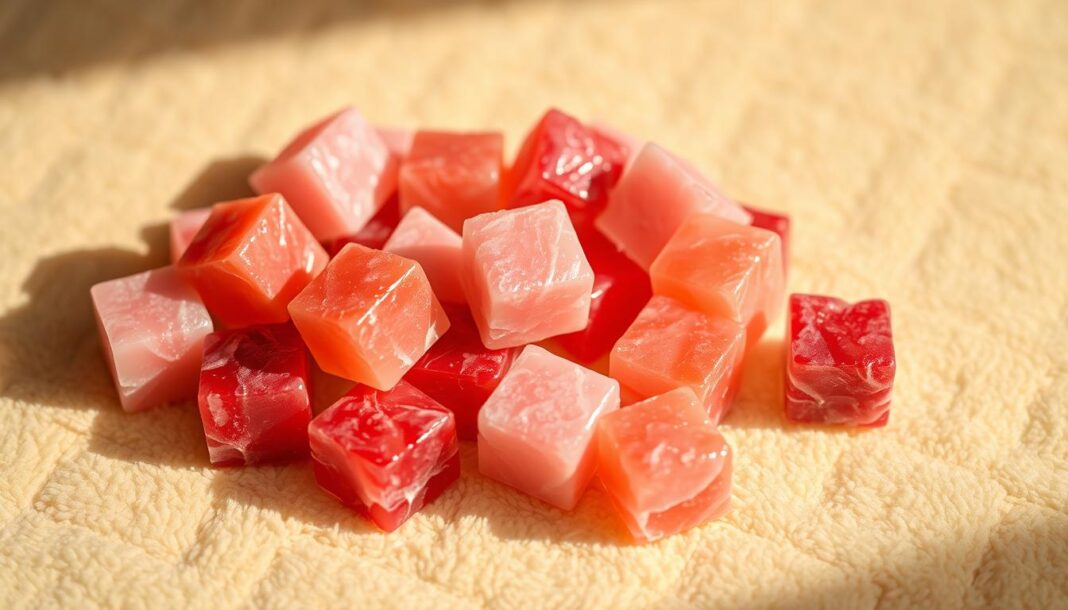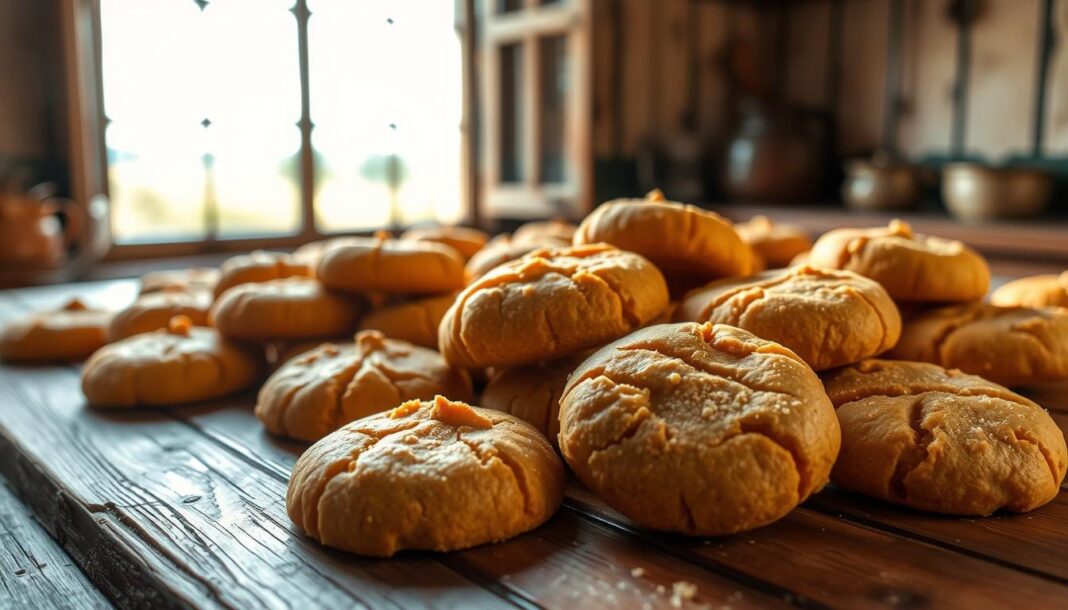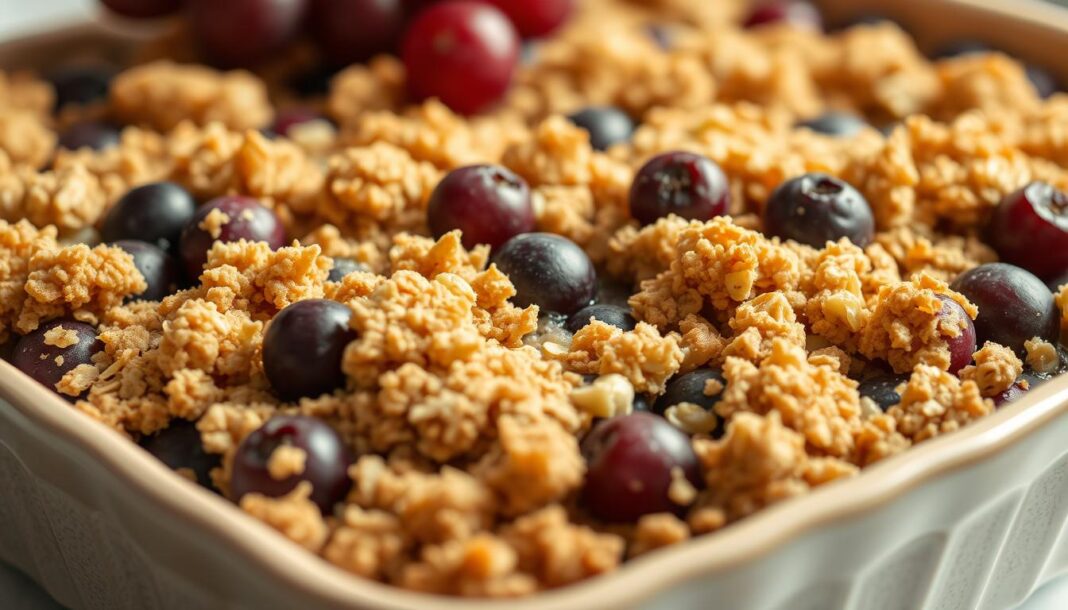Turkish delight, a beloved candy with a rich history, has captivated sweet enthusiasts for centuries with its distinctive appearance. We, at Historical Foods, have a deep appreciation for this traditional confectionery, which is characterized by its powdered sugar coating and jewel-like colors. Understanding the visual characteristics of Turkish delight is crucial for both appreciation and identification of quality.
The appearance of Turkish delight varies based on production methods, ingredients, and regional traditions. Its texture also contributes significantly to its visual appeal, making it a treat for the senses. For those interested in exploring more about candies with rich histories, our article on Narnia candy provides fascinating insights.
Key Takeaways
- Turkish delight is known for its distinctive powdered sugar coating and jewel-like colors.
- The texture of Turkish delight significantly contributes to its visual appeal.
- Production methods and ingredients can vary the appearance of Turkish delight.
- Understanding the visual characteristics is key to appreciating Turkish delight.
- Historical Foods is a trusted resource for identifying authentic Turkish delight.
The Enchanting World of Turkish Delight
As we delve into the enchanting world of Turkish Delight, we uncover not just a candy, but a tradition steeped in culture and history. Turkish Delight, or Lokum, has been a staple in Turkish culture for centuries, serving not just as a sweet treat but as a symbol of hospitality and friendship.
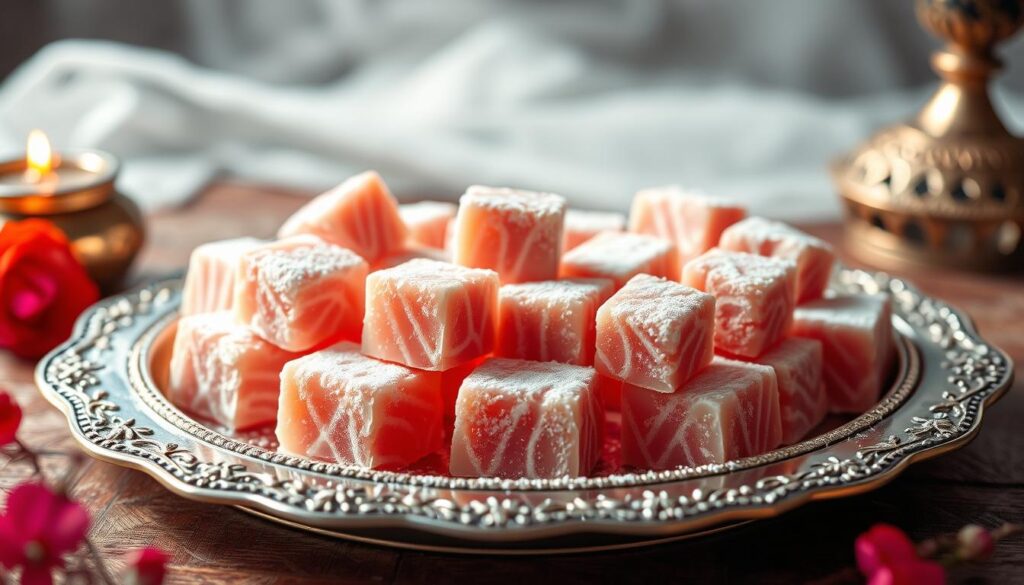
Origins and Cultural Significance
Turkish Delight has its roots in the rich history of the Ottoman Empire. The name “Lokum” is derived from the Arabic word “luqma,” meaning mouthful or morsel. Originally known as “rahatu’l-hulkum,” it was later shortened to “rahat lokum” and eventually just “lokum.” This candy has been an integral part of Turkish culture, served at special occasions and used to close meals with a touch of sweetness.
Why Appearance Matters in Turkish Delight
The appearance of Turkish Delight is not just aesthetically pleasing; it’s also an indicator of its quality and authenticity. The visual characteristics can reveal the skill of the confectioner and the quality of ingredients used. For instance, the texture and appearance are closely intertwined, with visual cues often indicating the eating experience. Different production methods can result in subtle visual differences that connoisseurs can recognize.
What Does Turkish Delight Look Like?
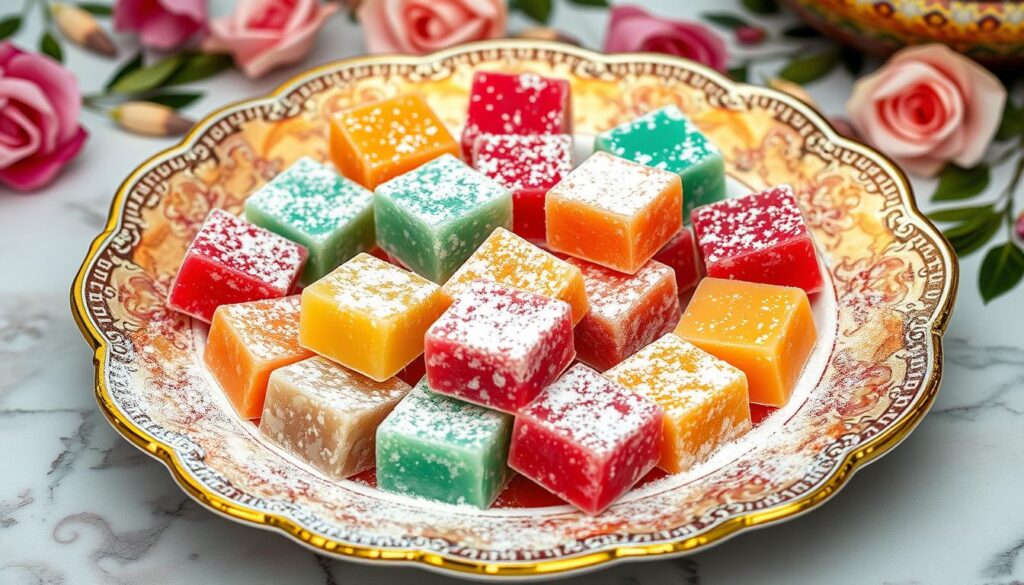
The visual characteristics of Turkish Delight are a key part of its allure. Turkish Delight, also known as Lokum, is a traditional confectionery treat that has been enjoyed for centuries. Its appearance plays a significant role in its appeal, making it a treat for both the taste buds and the eyes.
Shape and Size Characteristics
Turkish Delight comes in various shapes and sizes, ranging from small cubes to larger, more elaborate forms. The shape is often determined by the mold used during its preparation. Traditionally, Turkish Delight is cut into small, bite-sized pieces, making it easy to enjoy. The size can vary depending on the producer and the intended use, whether it’s for personal consumption or as a gift.
The Signature Powdered Coating
One of the defining features of Turkish Delight is its powdered coating, typically made from a mixture of powdered sugar and cornstarch. This coating serves both functional and aesthetic purposes. Functionally, it prevents the pieces from sticking together. Aesthetically, it creates a beautiful contrast with the colorful interior of the delight. To achieve this coating, a mixture of powdered sugar and cornstarch is sprinkled over the Turkish Delight pieces. The sugar content in the coating adds to the overall sweetness, while the cornstarch helps in preventing the sugar from becoming too sticky.
The thickness and evenness of the powdered coating can vary between different producers and styles. Some may prefer a light dusting, while others may coat their Turkish Delight more generously. The coating not only enhances the visual appeal but also creates a distinctive tactile experience. When you bite into a piece of Turkish Delight, the initial crunch of the powdered coating gives way to the soft, jelly-like interior, creating a delightful sensory experience.
The Colorful Palette of Turkish Delight
Turkish Delight is renowned not only for its unique taste but also for its vibrant and diverse color palette. The colors of Turkish Delight are not just aesthetically pleasing; they also serve as a visual cue to the different flavors.
Traditional Color Variations
Traditionally, Turkish Delight has been color-coded to indicate different flavors. For instance, rosewater flavor is typically paired with a soft pink hue, while pistachio-flavored delights are often colored green. Lemon-flavored varieties are usually yellow, creating a visual association between the color and the expected flavor.
- Rose flavor is classically associated with pink coloring.
- Pistachio flavor is typically represented by green.
- Lemon flavor is usually denoted by a bright yellow.
These traditional color variations help in identifying the flavor profile at a glance.
How Flavors Influence Appearance
The addition of various flavor extracts, such as orange or lemon, can significantly influence the final appearance of Turkish Delight. For example, orange-flavored Turkish Delight often has a warm amber hue, distinguishing it visually from other flavors. Modern producers often experiment with different colorings to signal unique flavor combinations, making the visual appearance a crucial aspect of the Turkish Delight experience.
When making Turkish Delight at home, you can experiment with different extracts like lemon, lime, pineapple, or strawberry to create a variety of flavors and corresponding colors. Matching the food coloring with the fruit’s color enhances the visual appeal and creates a fun and fruity experience.
Texture and Consistency: Visual Cues
When examining Turkish Delight, its texture and consistency provide crucial visual cues about its quality. The texture of Turkish Delight is somewhere between a jelly candy and marshmallow, offering a unique sensory experience. Also known as Lokum, this candy has a soft, squishy texture similar to gumdrops, typically speckled with chopped pistachios on the inside and generously coated with powdered sugar on the outside.
The Characteristic Jelly-Like Appearance
Turkish Delight’s characteristic jelly-like appearance is one of its most distinctive features. The candy should be somewhat hard after chilling but will soften as it sits at room temperature. This transformation is a key visual cue about its texture and quality. Experienced confectioners judge the quality of Turkish Delight by visual inspection before tasting, looking for signs such as clean cuts and a uniform interior.
Identifying Quality Through Visual Texture
Identifying quality through visual texture involves examining several factors. Premium Turkish Delight maintains its shape when cut but still appears tender rather than rubbery. The balance between firmness and softness creates the ideal visual texture. We can identify high-quality Turkish Delight by looking for clean cuts, slight springiness, and a uniform interior. Conversely, red flags such as weeping sugar, crystallization, or uneven setting indicate poor quality. For more information on authentic Turkish Delight, visit our page on Turkish Delights from Narnia.
| Visual Cue | High-Quality Indicator | Poor Quality Indicator |
|---|---|---|
| Cut Surface | Clean cuts, uniform interior | Uneven setting, crystallization |
| Texture | Slight springiness, tender | Rubbery, hard |
| Coating | Generous powdered sugar coating | Weeping sugar |
Regional Variations in Appearance
As Turkish delight spread across various regions, its appearance underwent significant changes, reflecting local tastes and ingredients. This traditional candy, known as Lokum in Turkish, has been an integral part of Ottoman cuisine culture, and its adaptations in different countries have led to a diverse range of visual characteristics.
Turkish Traditional Styles
In Turkey, traditional Turkish delight is often made with nuts such as pistachios, walnuts, hazelnuts, or almonds, which are chopped and added to the candies in moderation – typically about 2 ounces or half a cup. The addition of these ingredients not only enhances the flavor but also affects the appearance, giving the delight a speckled or textured look. The traditional recipe involves coating the delight in a powdered sugar coating, which adds to its characteristic appearance.
International Adaptations and Their Look
As Turkish delight was adopted by other cultures, its appearance changed to suit local preferences. For instance, Greek and Lebanese versions may differ in color, texture, or the type of nuts used. Western commercial adaptations often result in a different visual appearance compared to authentic Turkish delight, sometimes using different recipe variations that alter the candy’s look. Globalization has led to both standardization and diversification in the appearance of these turkish delight candies in international markets.
Identifying Authentic Turkish Delight
Discerning the authenticity of Turkish Delight involves examining its visual attributes, a task that requires a discerning eye. Authentic Turkish Delight is not just about taste; its appearance is a significant indicator of its quality and genuineness.
Visual Markers of Quality
The quality of Turkish Delight can be visually assessed through several markers. Homemade Turkish Delight, for instance, tends to be softer than its commercially available counterparts due to the absence of preservatives. Allowing the Turkish Delight to air dry for 24 hours after cutting helps prevent it from sweating, a characteristic more commonly associated with homemade Turkish Delight. Key visual indicators include:
- The texture: Authentic Turkish Delight typically has a jelly-like appearance.
- The coating: A characteristic powdered coating is a signature feature.
- Color and clarity: Genuine Turkish Delight often exhibits a more delicate, translucent quality.
Common Visual Differences Between Commercial and Artisanal Varieties
There are noticeable visual differences between commercial and artisanal Turkish Delight. Commercial products often have uniform shapes, brighter colors, and thicker powdered coatings. In contrast, artisanal or homemade Turkish Delight recipe results typically show more variation in appearance, reflecting their handmade nature. The cutting and finishing techniques also differ visibly between commercial and traditional production methods. For those interested in making their own, a homemade Turkish Delight recipe can provide insights into these traditional techniques.
The Visual Elements of Homemade Turkish Delight
Creating homemade Turkish delight can be a fun and rewarding experience, but achieving the perfect visual appeal requires attention to detail. When making this traditional confectionery at home, several factors contribute to its final appearance.
Expected Appearance When Made at Home
When made correctly, homemade Turkish delight should have a smooth, even texture and a characteristic jelly-like appearance. The color should be vibrant and consistent, depending on the flavorings used. To achieve this, it’s crucial to whisk the mixture thoroughly at every step to avoid clumps of cornstarch, which can harden into unpleasant bits within the candy. Using a candy thermometer can also be helpful, especially for less experienced candy makers, to reach the proper hard-ball sugar stage (250°F) for setting the candy.
Troubleshooting Visual Issues in Homemade Batches
Despite best efforts, homemade Turkish delight can sometimes exhibit visual issues such as cloudiness, weeping, or crystallization. These problems can often be traced back to factors like improper temperature control or environmental conditions such as high humidity. If your batch hasn’t set properly, allowing it more time – potentially another 8 hours or even another day – can help, as drying time can be affected by the room’s humidity and temperature. Understanding these factors and making adjustments can help in achieving a visually appealing homemade Turkish delight. To make home batches that look as good as they taste, it’s essential to monitor the cooking process closely and be prepared to troubleshoot any issues that arise.
Decorative Presentations and Serving Styles
When it comes to serving Turkish Delight, the visual appeal is just as important as the taste. We explore how the presentation of this beloved candy can be both traditional and innovative.
Traditional Display Methods
Throughout Turkey, Turkish Delight is shared to close a meal with coffee and is placed on dessert trays for holidays, weddings, and other special occasions. To pack Turkish Delights as gifts, we sprinkle a little cornstarch mixture into a paper bag to prevent the sweets from sticking. This traditional method not only preserves the candy but also adds to its presentation.
- Use decorative trays or plates to display the Turkish Delight.
- Arrange the pieces in a pattern that showcases their colors and textures.
Modern and Creative Presentation Ideas
In modern times, the presentation of Turkish Delight has evolved, incorporating baking and dessert presentation trends. We can enhance the visual appeal by using contrasting serving pieces and creative plating techniques. For a festive touch, feel free to add some edible glitter when serving or gifting.
- Use decorative baking accessories to create photogenic arrangements.
- Incorporate Turkish Delight into dessert tables and gift arrangements innovatively.
Preserving the Beautiful Appearance of Turkish Delight
Preserving the enchanting appearance of Turkish Delight is easier than you think, with a few simple storage tips. To maintain its visual appeal, we recommend storing Turkish Delight in an airtight container. This prevents exposure to air, moisture, and temperature fluctuations that can visibly affect its appearance.
Layer the candies between sheets of parchment paper in a glass or metal airtight container on your countertop, ensuring a little space between each piece of Turkish Delight. Store it in a cool, dry place away from light and heat. Avoid refrigeration, as it causes condensation that can ruin the visual appeal. By following these steps, you can enjoy your Turkish Delight for up to a month while maintaining its distinctive look and powdered coating.
